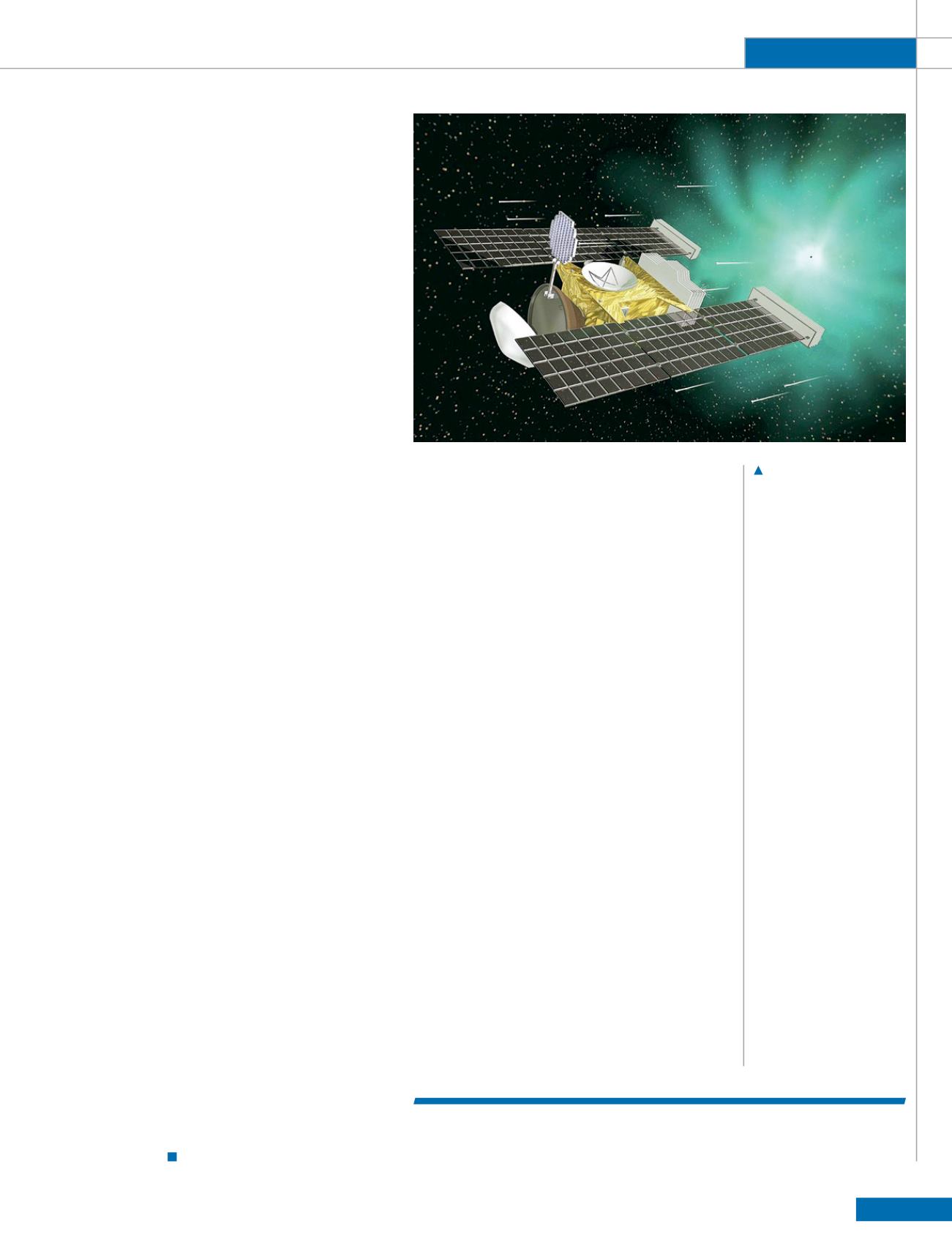
ROOM
75
Astronautics
References
1 1COSPAR (2002). COSPAR Planetary Protection Policy. 4 p.
2 Space Studies Board (2002). The quarantine and certification of
Martian samples. Committee on Planetary and Lunar Exploration
(chaired by J. Wood), National Research Council, National Academy
Press, Washington D.C. ISBN-13: 978-0309075718.
3 Ammann W., Barros J., Bennett A., Bridges J., Fragola J., Kerrest A.,
Raoul H., Rettberg P., Rummel J., Salminen M., Stackelbrandt E.,
Swings J.P., Walter N. (2012). Mars Sample Return backward contami-
nation - Strategic Advice and requirements, ESF-ESSC Study Group
on Mars Sample Return Requirements, Printing: Ireg - Strasbourg,
July 2012, ISBN: 978-2-918428-67-1.
4 Rummel J.D., Race M.S., DeVinenzi D.L., Schad P.J., Stabekis P.D.,
Viso M., and Acevedo S.E. (2002). A draft test protocol for detecting
possible biohazards in Martian samples returned to Earth. NASA/
CP-2002-211842.
5 Beaty D.W., Allen C.C., Bass D.S., Buxbaum K.L., Campbell J.K.,
Lindstrom D.J., Miller S.L., and Papanastassiou D.A. (2009). Planning
considerations for a Mars Sample Receiving Facility: summary and
interpretation of three design studies. Astrobiology 9(8), 745-758.
6 Häuplik-Meusburger S. and Lu S.-H. (Eds.) (2016). European Extra-terres-
trial Sample Curation Facility - Design Studio SS2016. Vienna University of
Technology, Department for Building Construction and Design - HB2, 121
pages [https:/ issuu.com/hochbau2/docs/book_institute_hb2].
7 Hutzler A. et al. (2017). D3.4: Final Design of the Facilities and Infra-
structure, Deliverable of the EURO-CARES project.
About the authors
Aurore Hutzler
, a geologist with a focus on geochemistry, has a
doctorate in Planetary Science. Her research on cosmochemistry of
meteorites led her to work on more pristine extra-terrestrial samples
from sample return missions. She is currently a full-time post-doctoral
researcher for the EURO-CARES project at the Natural History Museum
Vienna, Austria.
Ludovic Ferrière
, a doctor in geology, is chief curator of rock
collections and co-curator of the meteorite collection at the Natural
History Museum Vienna. He is also a researcher and has confirmed,
together with different colleagues, three of the currently 189 recognised
meteorite impact craters on Earth.
are conducted on the samples. Depending on the
nature of the samples, this phase can be done
inside or outside of the ESCF.
It is planned to keep the curation facility as
light as possible in term of instrumentation, and
to disseminate unrestricted samples to external
laboratories (and even restricted samples in
specific specific sealed containers with semi-
transparent windows allowing different analyses to
be conducted). However, it is clear that in the case
of restricted samples, it will be necessary to keep
the research under containment. Some part of the
sample will need to be devoted to Life Detection
(LD) and Biohazard Assessment Protocols (BAP)
[4], with analyses from non-destructive, to
destructive, to microbiology cultures and to
potentially animal tissue testing.
Flexible facility
Flexibility is seen as one of the most important
concepts to be considered for such a project
to allow for future developments of scientific
analytical capabilities and this was developed at
several scales in the framework of EURO-CARES,
with the requirement of future extensions and
potential growth.
Through a collaboration with the Vienna
University of Technology (2016) [6], and with
the Canadian branch of Merrick and Company
(2017) [7], functional layouts and global designs
were produced. The flexibility requirement was
developed at three scales, from the room scale
(some rooms should allow for restructuring or
a change of the activity to be conducted inside),
to the laboratory scale (a curation laboratory
might be expanded for new missions, or an office
building might accommodate more staff), to the
ESCF scale (it is very unlikely that all different
parts of the ESCF will be built at the same time
from the beginning).
On top of the flexibility, architectural layouts
were taken into account along with other
important aspects, such as opportunities to
encourage meetings and communication between
personnel to increase working efficiency and
cooperation, and favour the health and well-being
of staff by providing a pleasant work environment.
The EURO-CARES team presented the case for
an ESCF at a workshop in Florence, Italy, in July
2017. The last steps of the project will then be to
wrap feedback from all different communities
(architects, geologists, microbiologists, engineers,
etc.) knowing that to be truly successful in such a
project all different expertises and opinions should
come together.
Flexibility is seen as one of the most important
concepts to be considered for such a project
NASA’s Stardust was
the first spacecraft to
return cometary samples.
In 2004, the Stardust
spacecraft made a close
flyby of comet Wild-2,
collecting comet and
interstellar dust,
returning samples to
Earth in a capsule two
years later.


